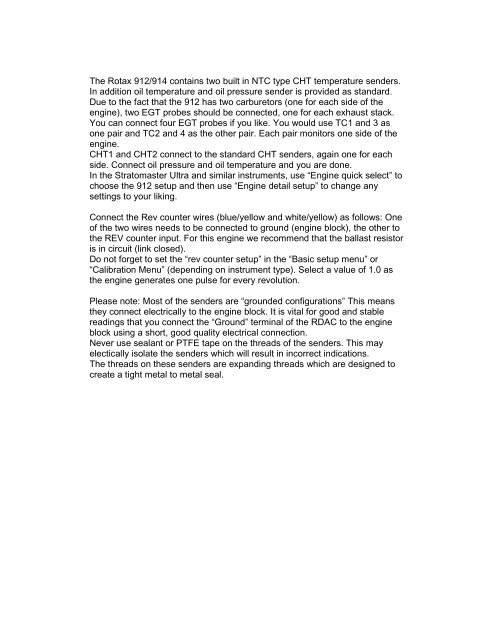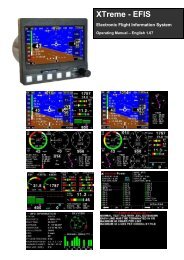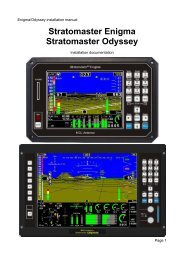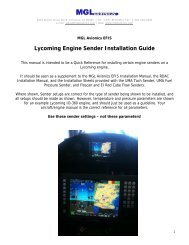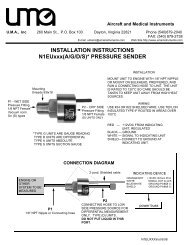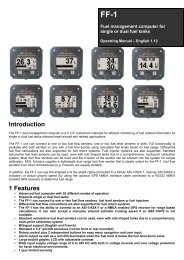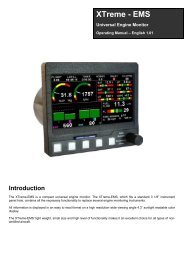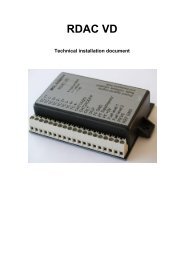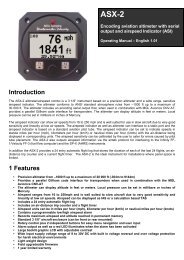RDAC X installation manual (800 KBytes) - MGL Avionics
RDAC X installation manual (800 KBytes) - MGL Avionics
RDAC X installation manual (800 KBytes) - MGL Avionics
Create successful ePaper yourself
Turn your PDF publications into a flip-book with our unique Google optimized e-Paper software.
The Rotax 912/914 contains two built in NTC type CHT temperature senders.<br />
In addition oil temperature and oil pressure sender is provided as standard.<br />
Due to the fact that the 912 has two carburetors (one for each side of the<br />
engine), two EGT probes should be connected, one for each exhaust stack.<br />
You can connect four EGT probes if you like. You would use TC1 and 3 as<br />
one pair and TC2 and 4 as the other pair. Each pair monitors one side of the<br />
engine.<br />
CHT1 and CHT2 connect to the standard CHT senders, again one for each<br />
side. Connect oil pressure and oil temperature and you are done.<br />
In the Stratomaster Ultra and similar instruments, use “Engine quick select” to<br />
choose the 912 setup and then use “Engine detail setup” to change any<br />
settings to your liking.<br />
Connect the Rev counter wires (blue/yellow and white/yellow) as follows: One<br />
of the two wires needs to be connected to ground (engine block), the other to<br />
the REV counter input. For this engine we recommend that the ballast resistor<br />
is in circuit (link closed).<br />
Do not forget to set the “rev counter setup” in the “Basic setup menu” or<br />
“Calibration Menu” (depending on instrument type). Select a value of 1.0 as<br />
the engine generates one pulse for every revolution.<br />
Please note: Most of the senders are “grounded configurations” This means<br />
they connect electrically to the engine block. It is vital for good and stable<br />
readings that you connect the “Ground” terminal of the <strong>RDAC</strong> to the engine<br />
block using a short, good quality electrical connection.<br />
Never use sealant or PTFE tape on the threads of the senders. This may<br />
electically isolate the senders which will result in incorrect indications.<br />
The threads on these senders are expanding threads which are designed to<br />
create a tight metal to metal seal.


